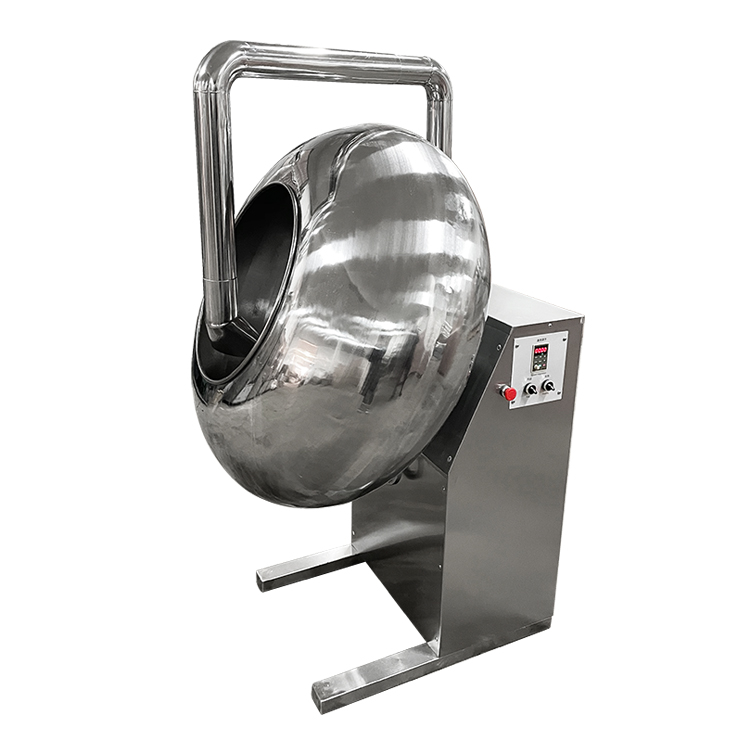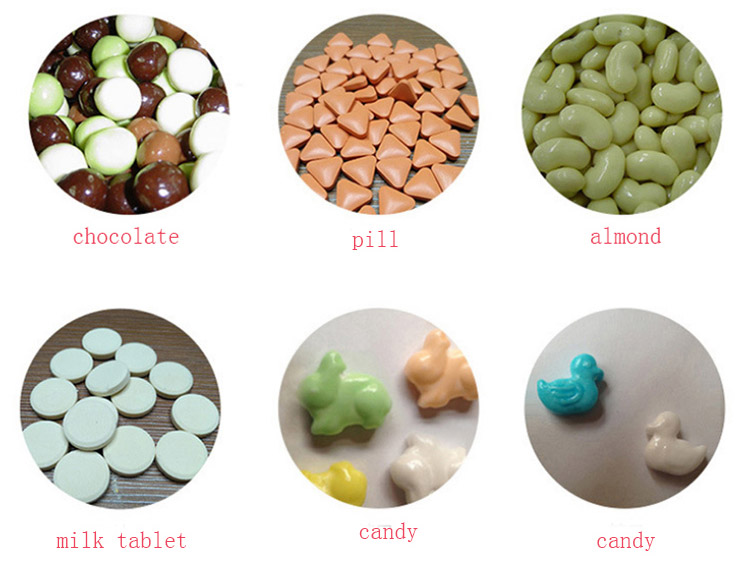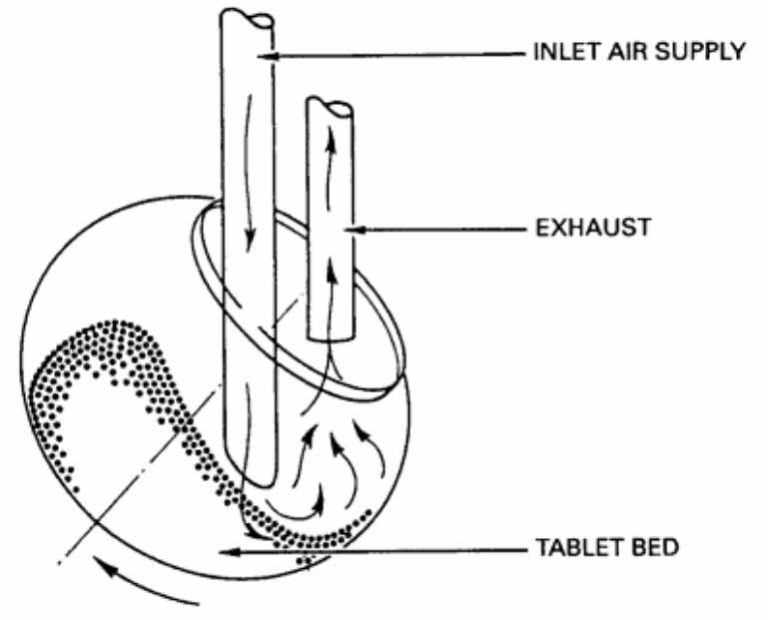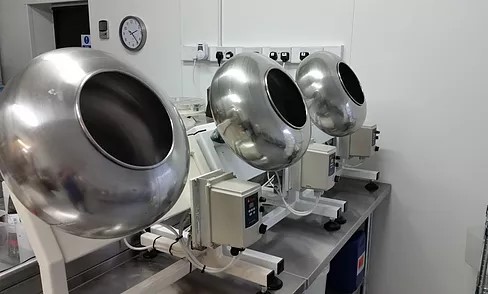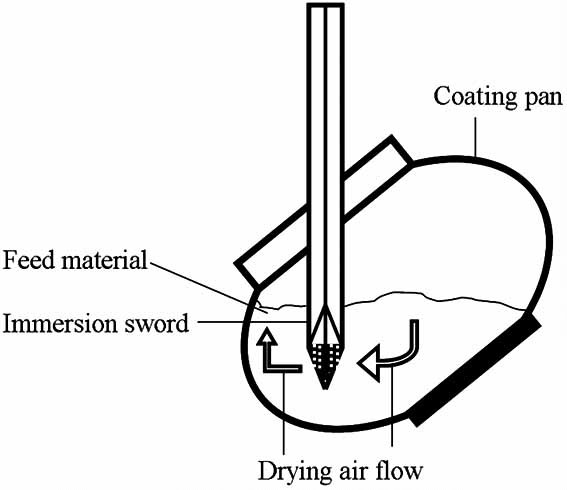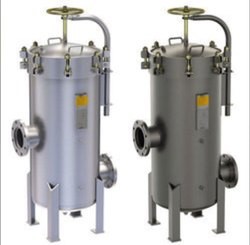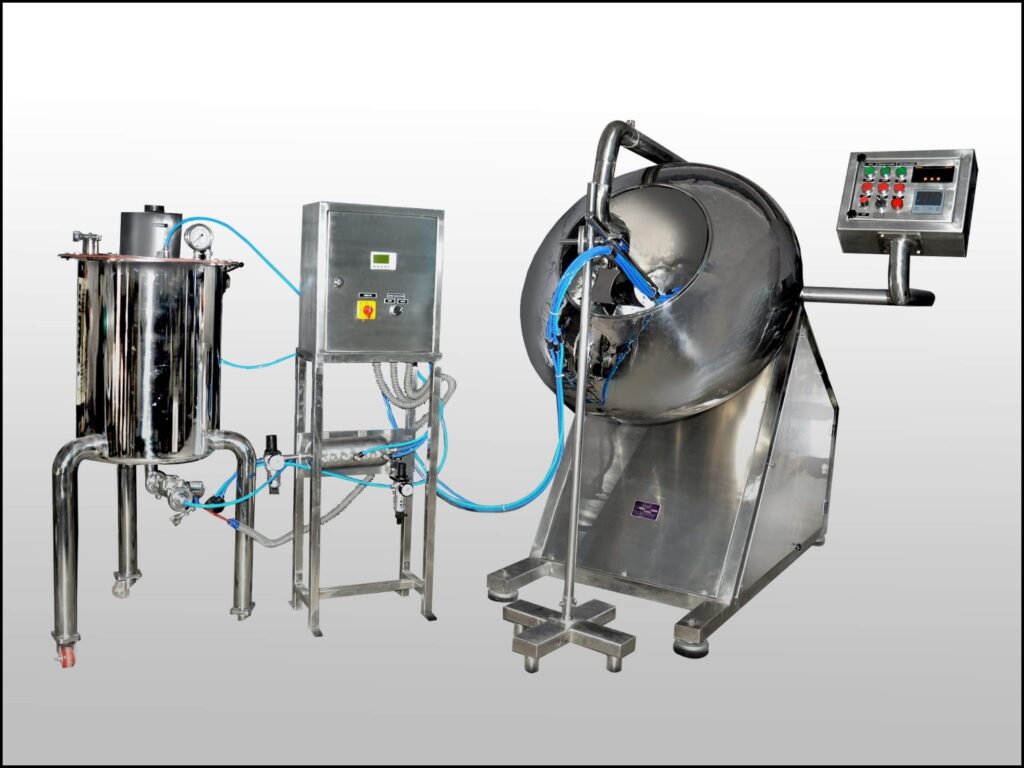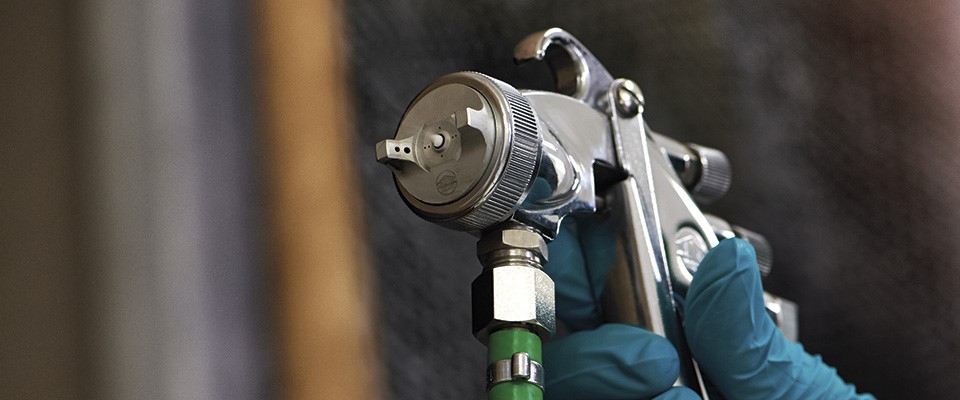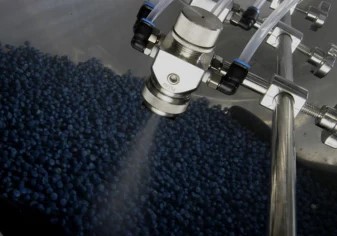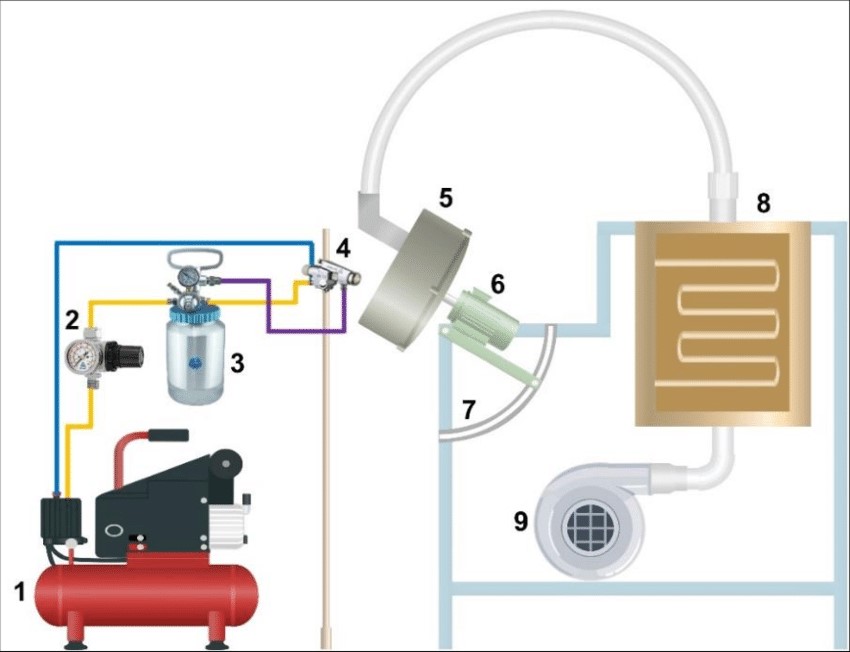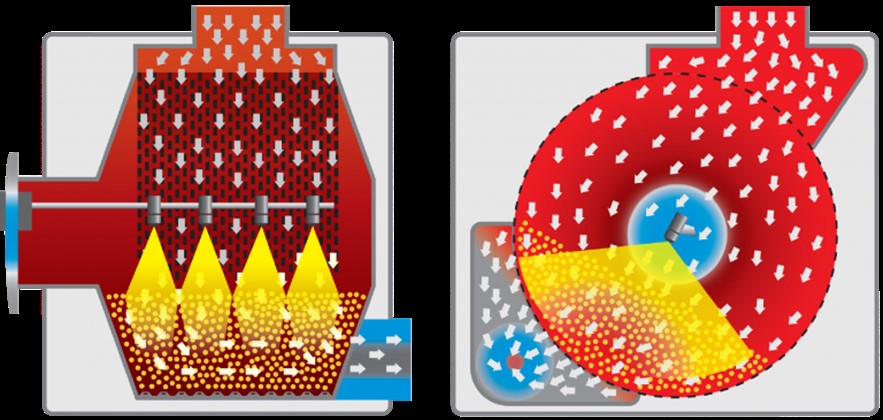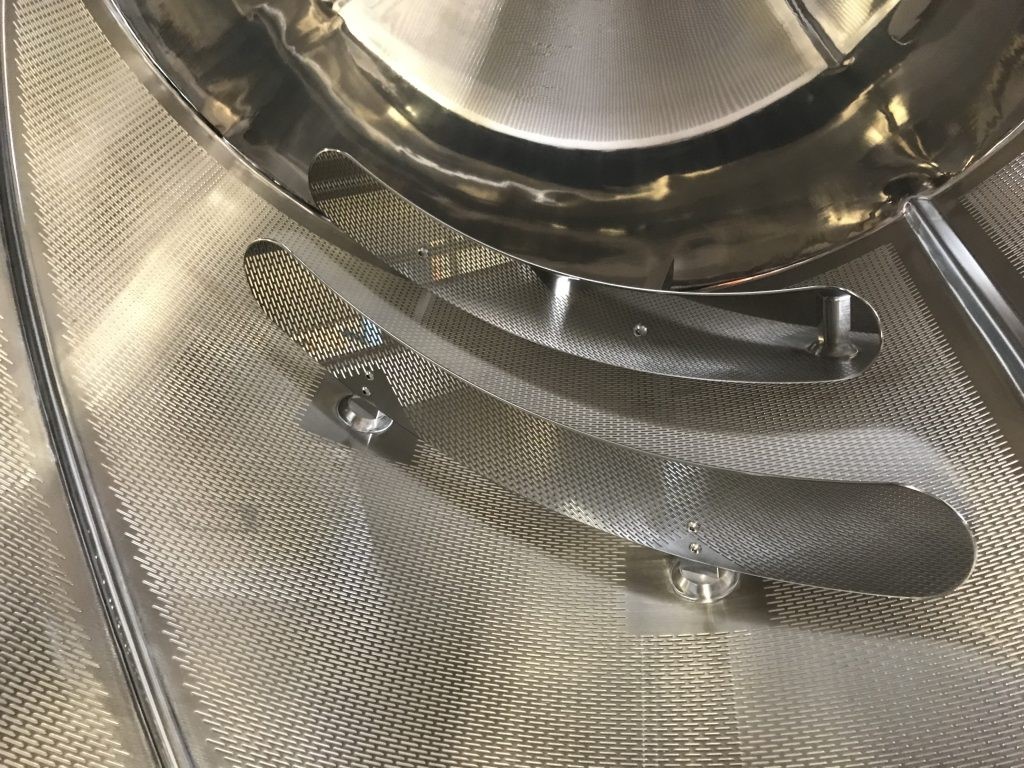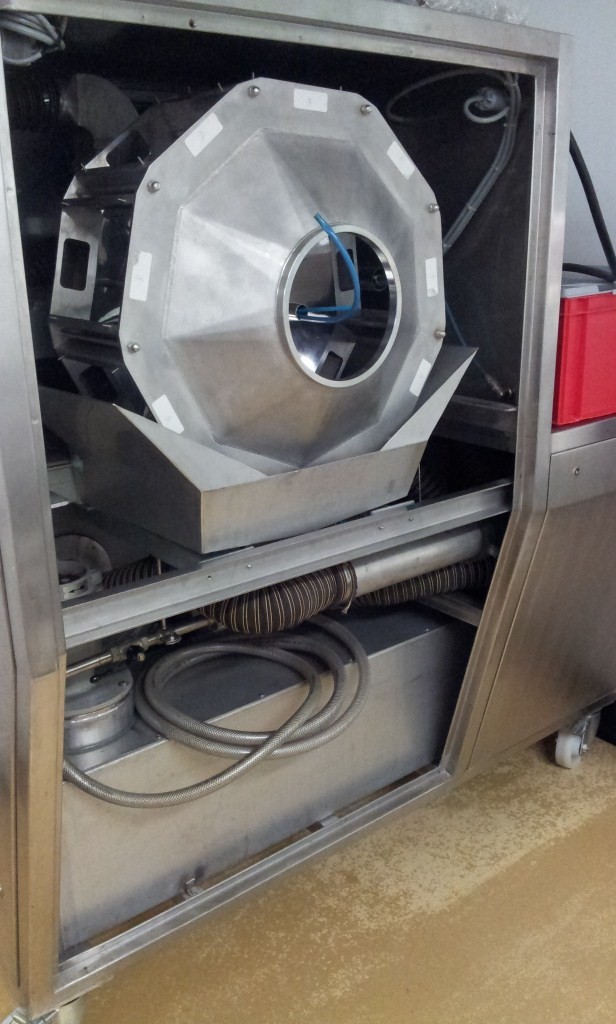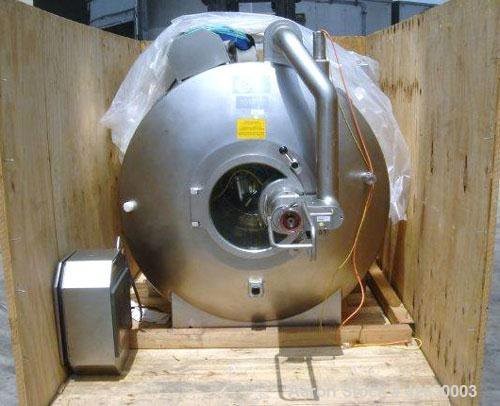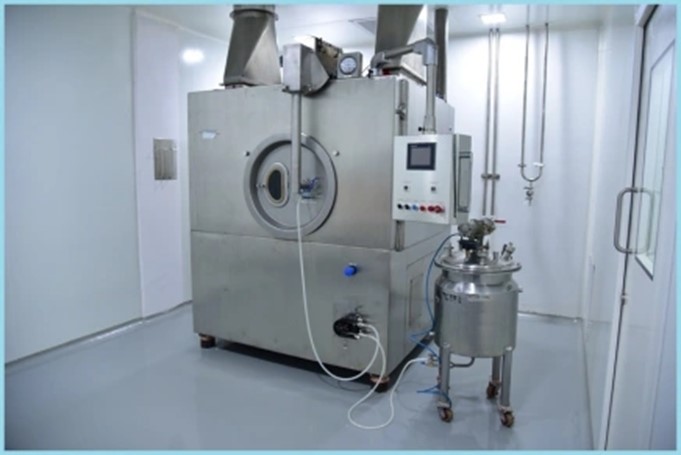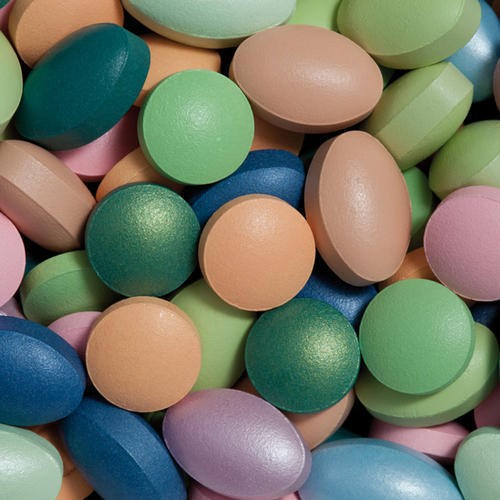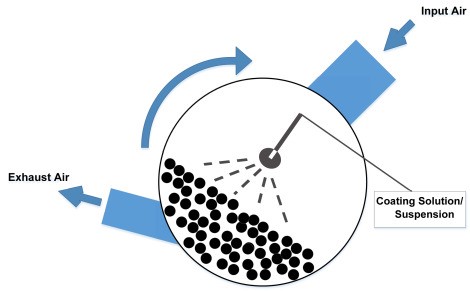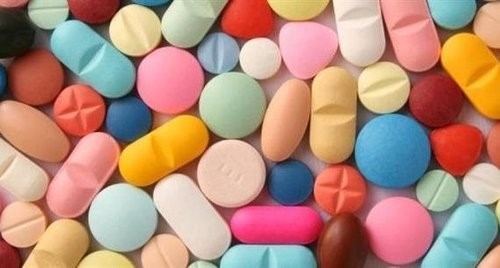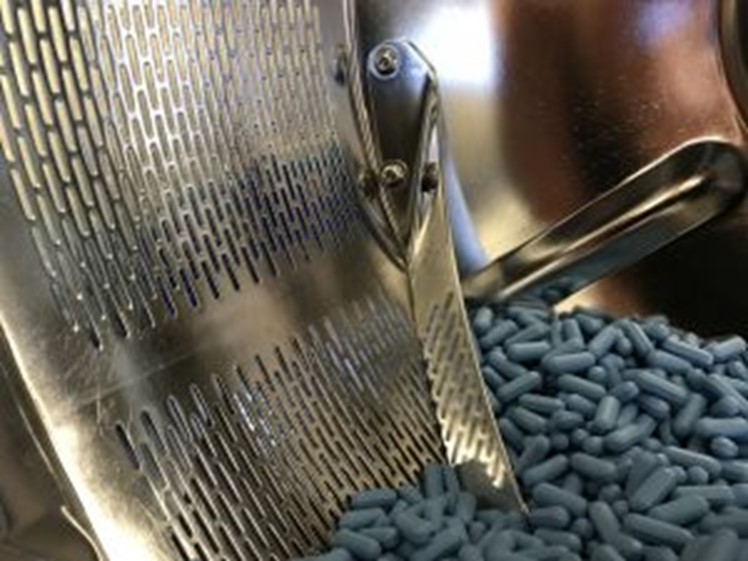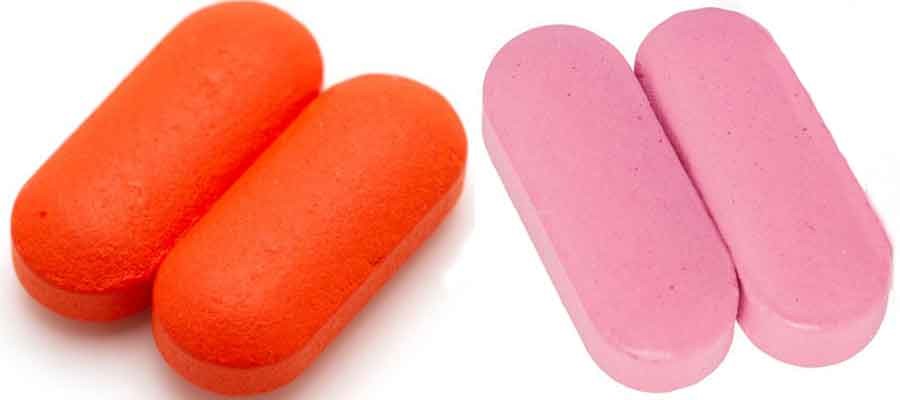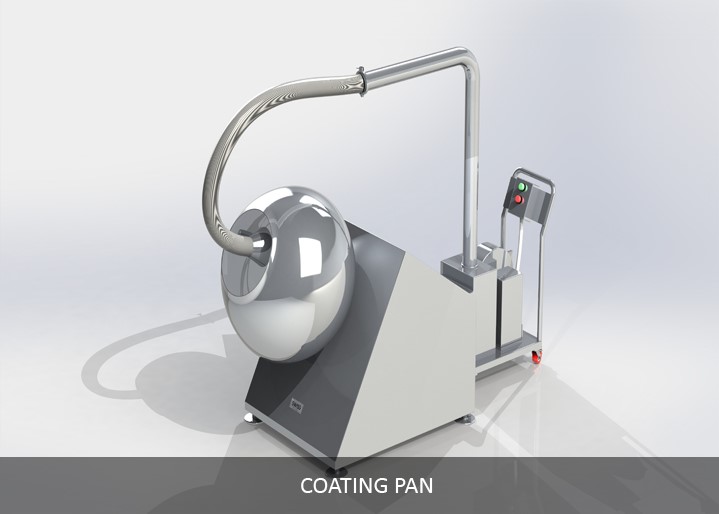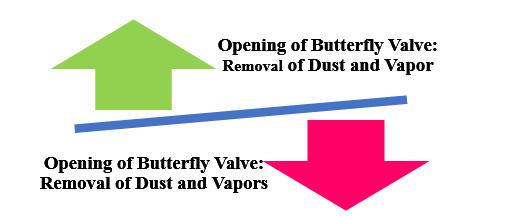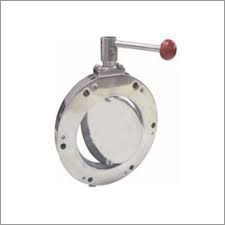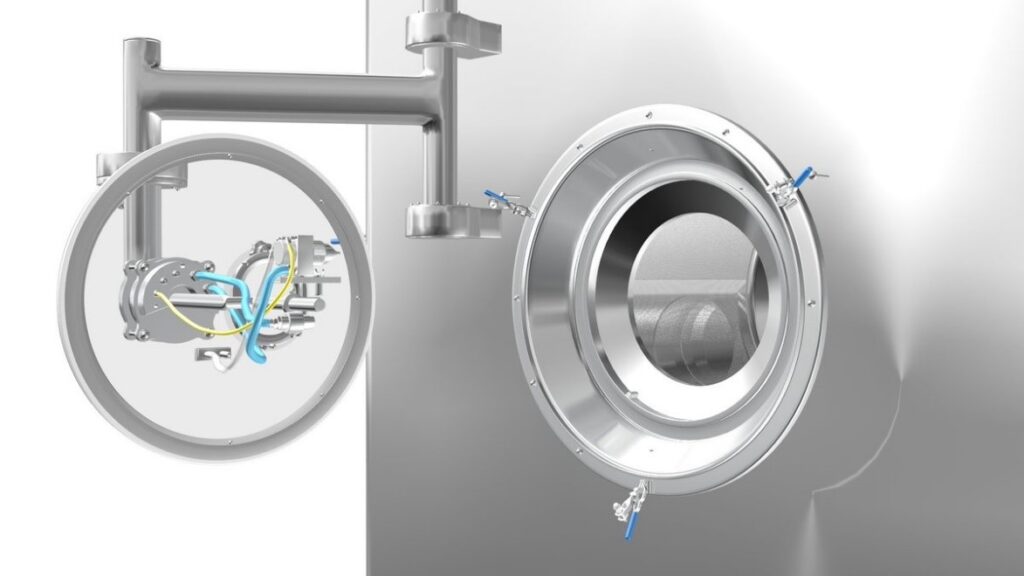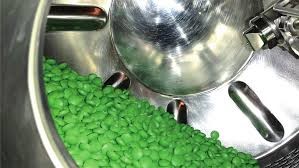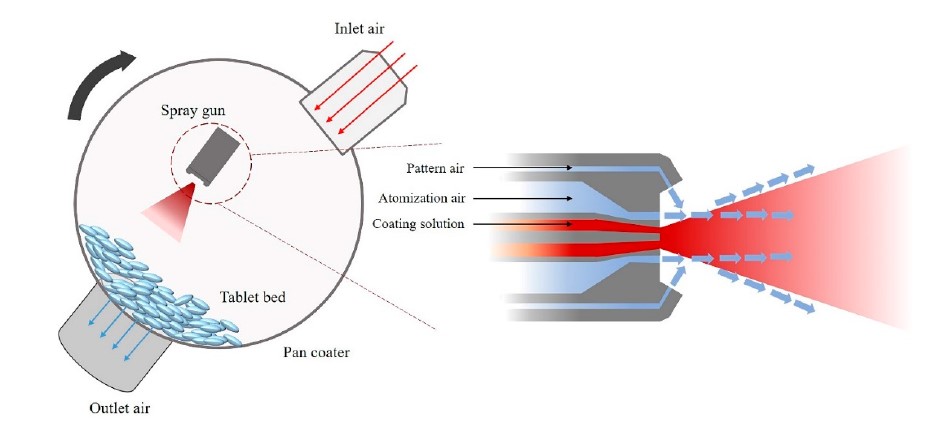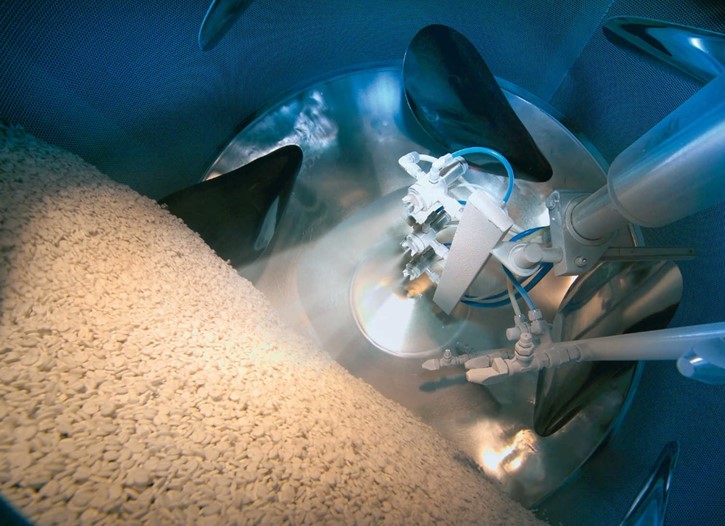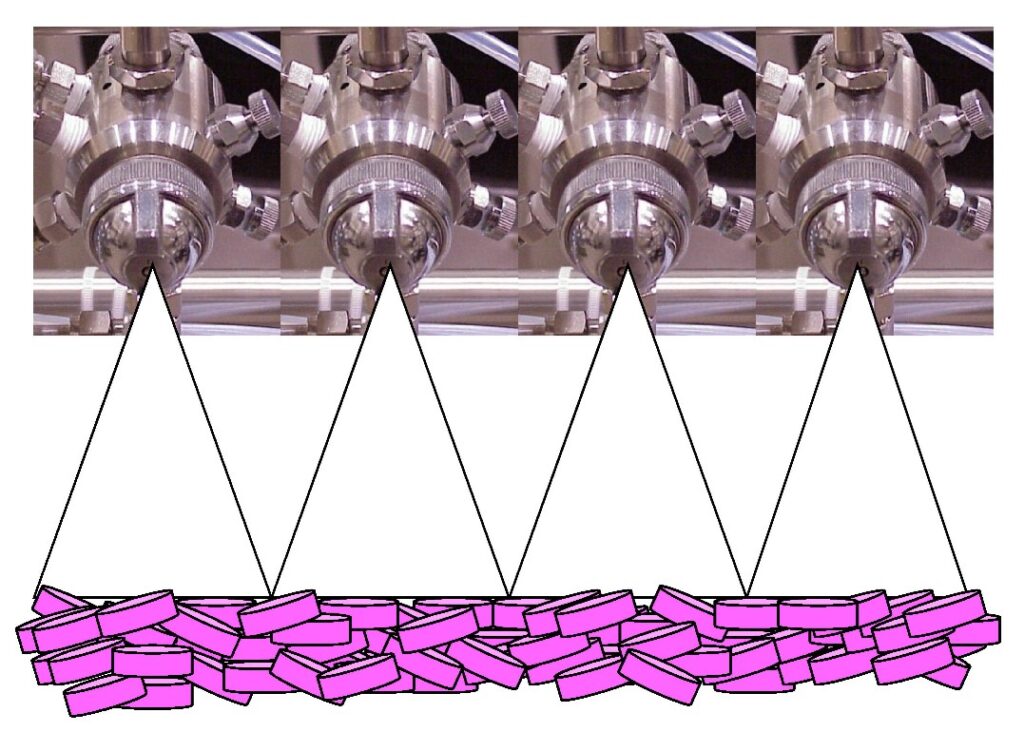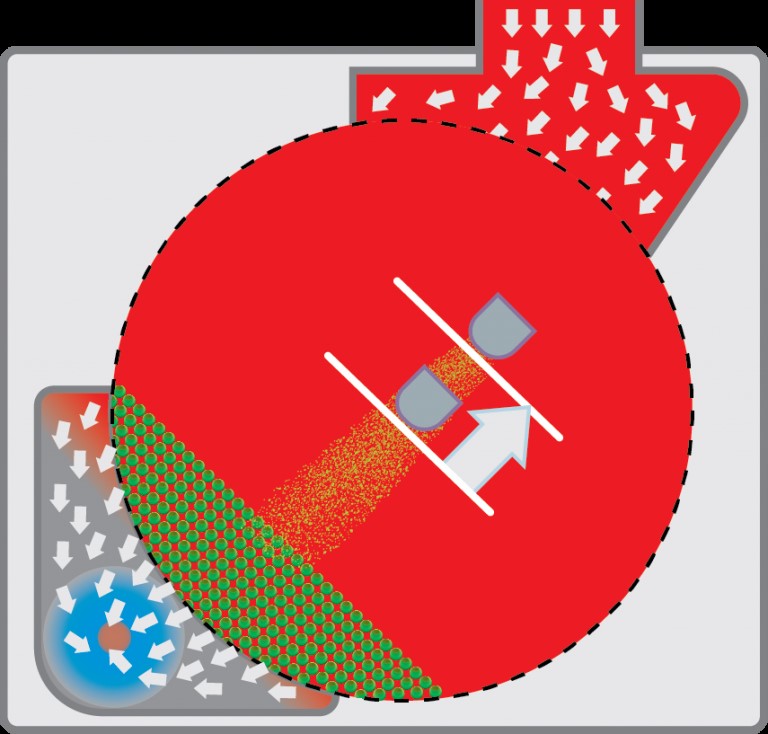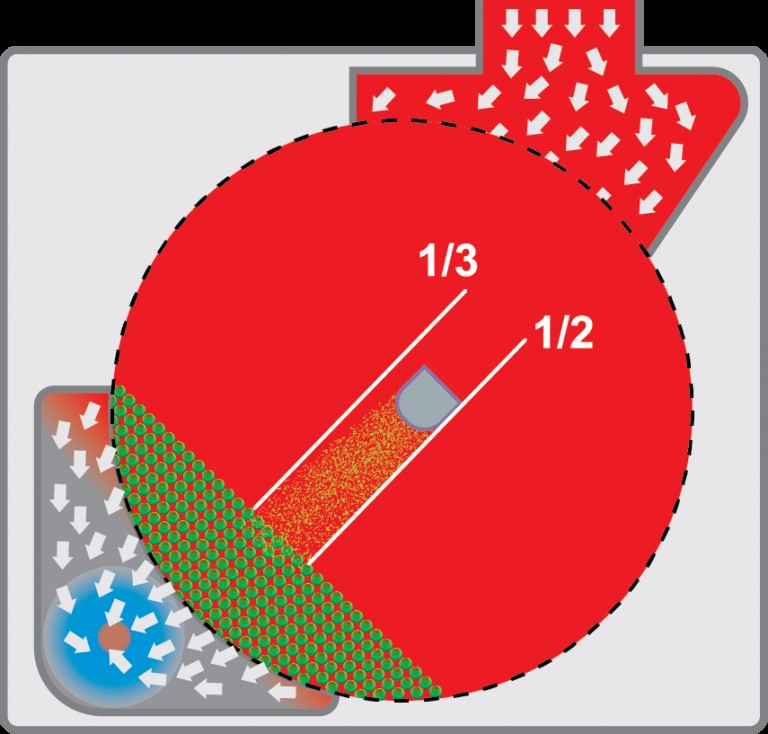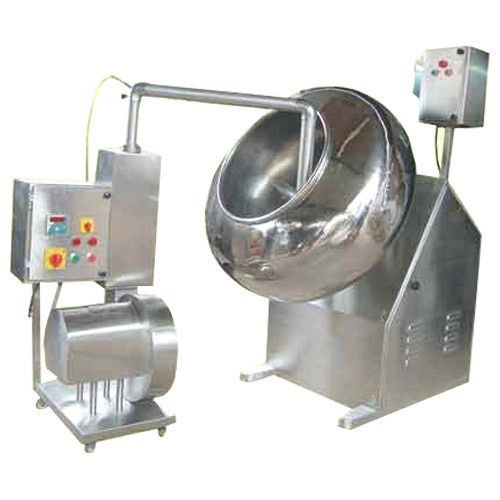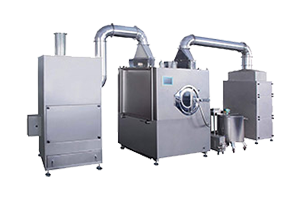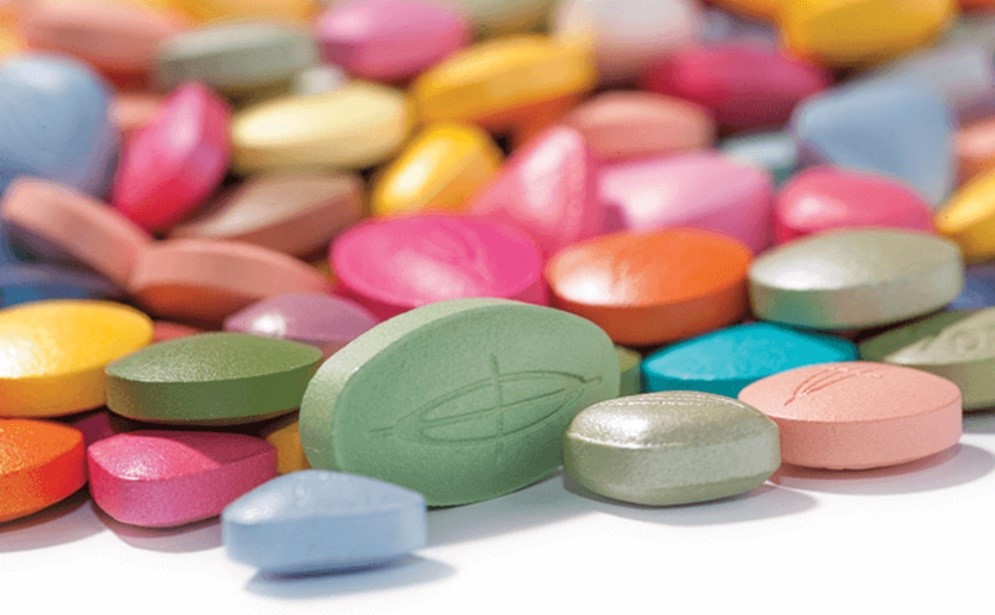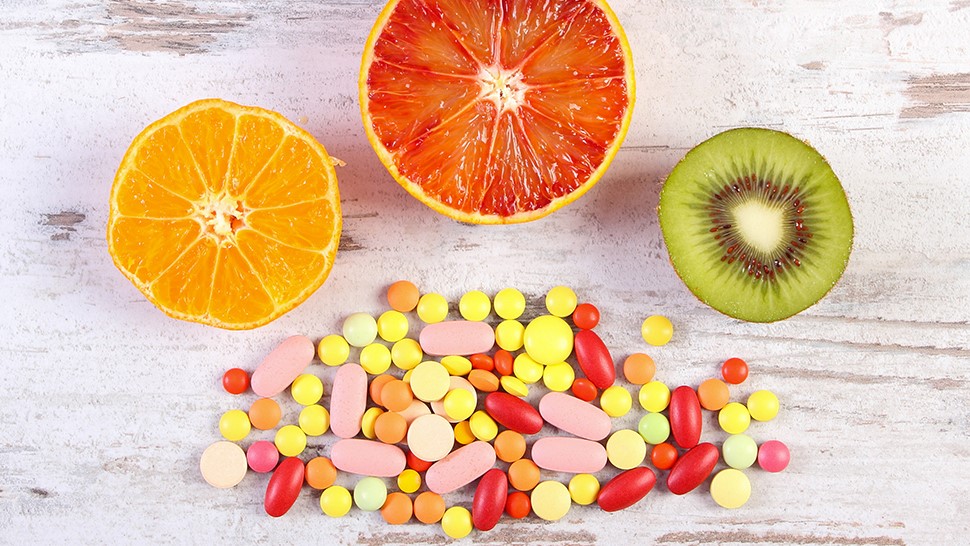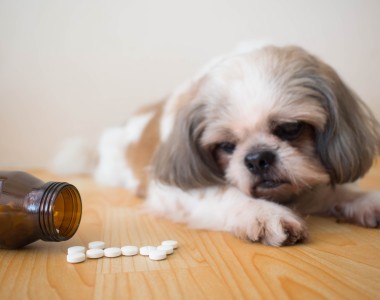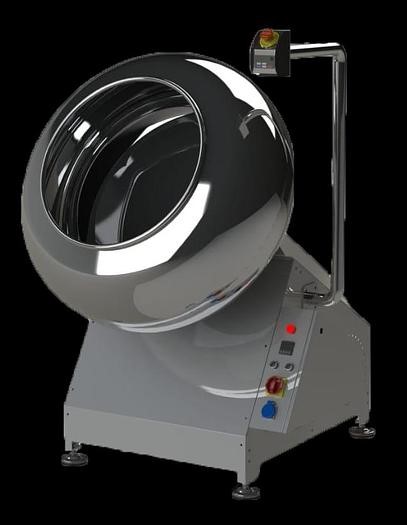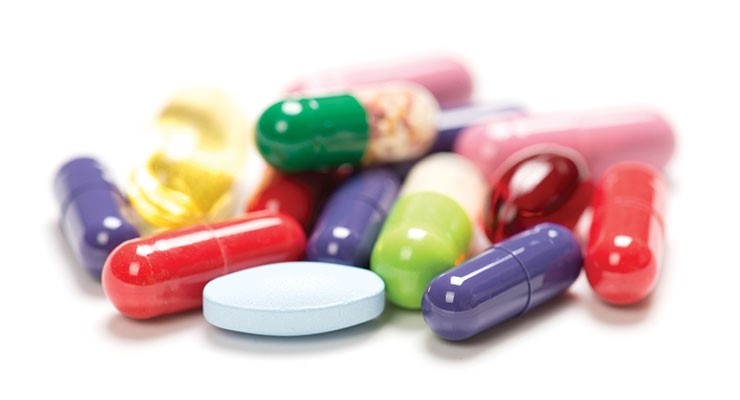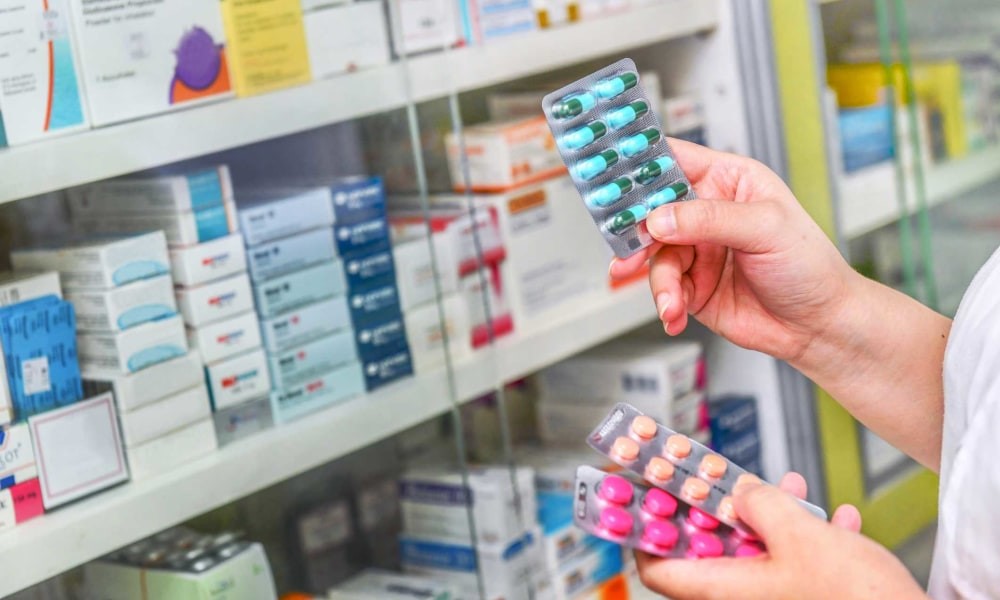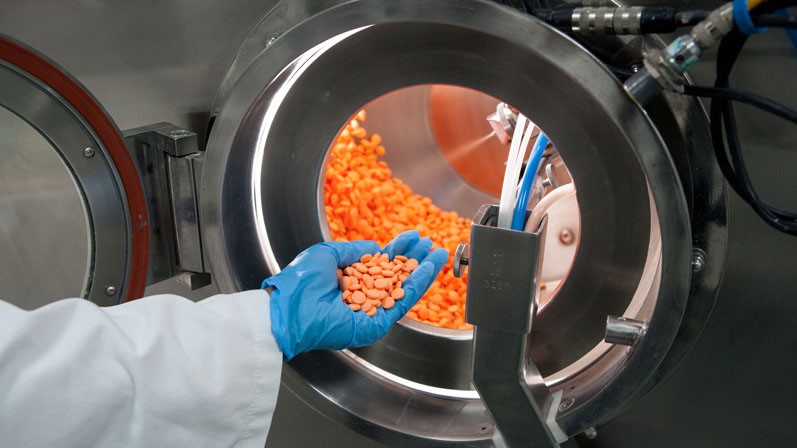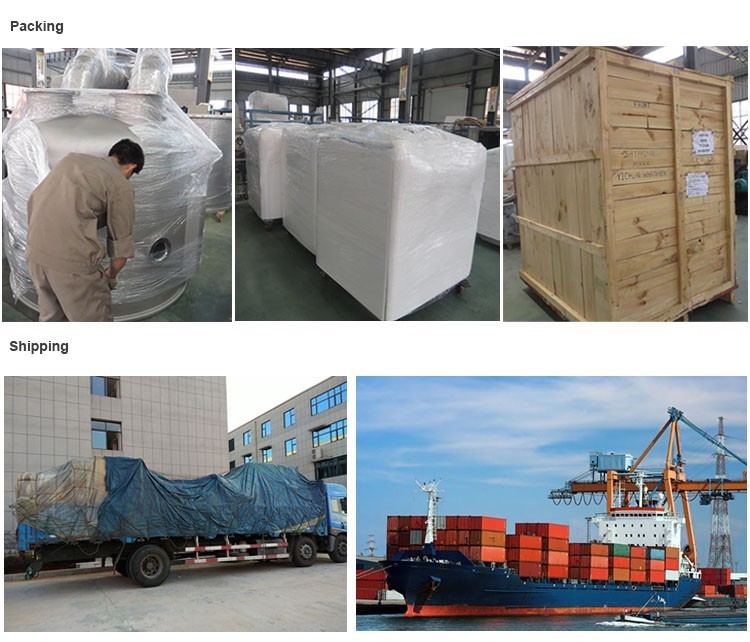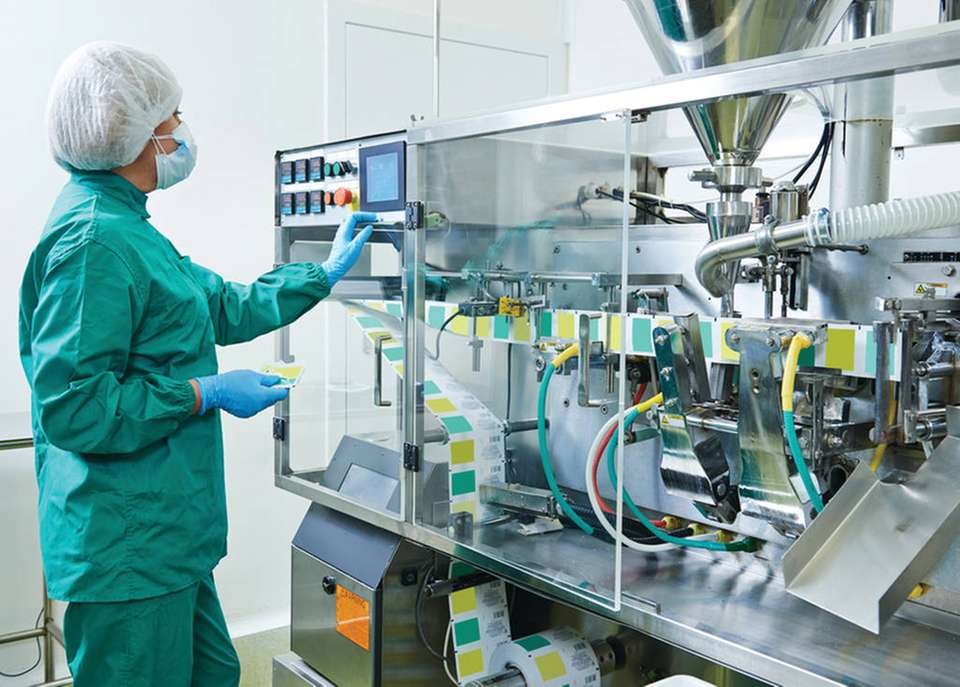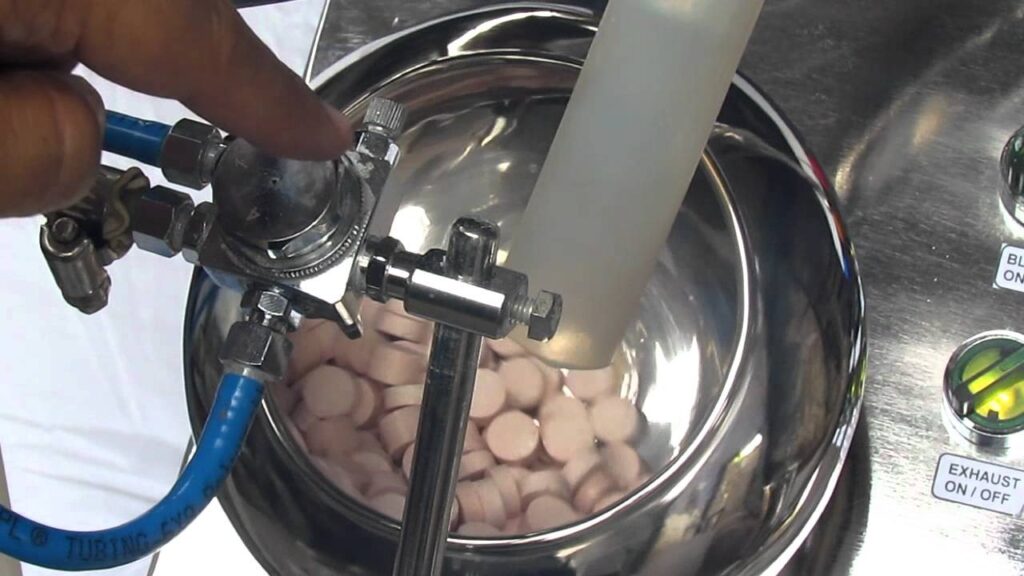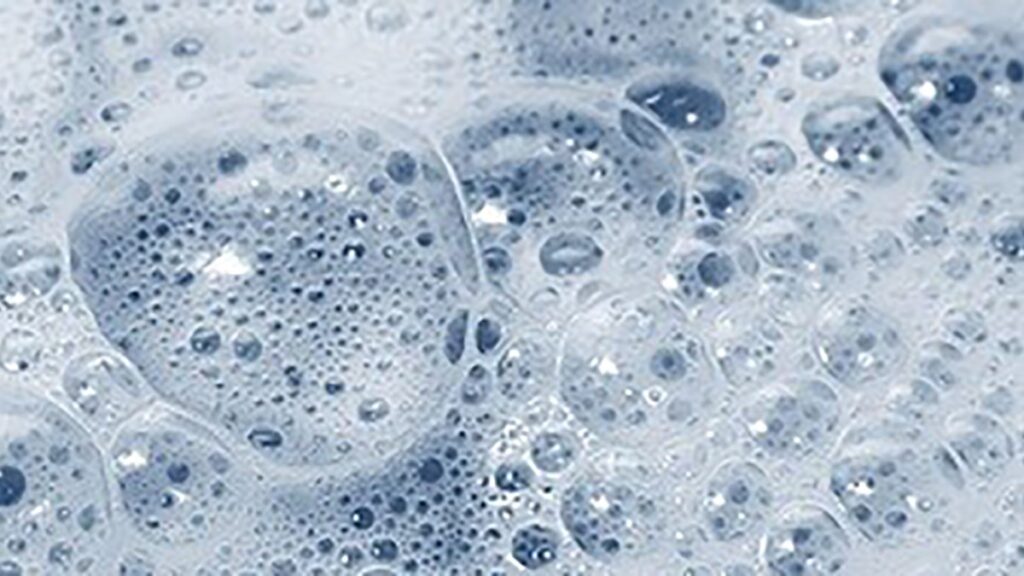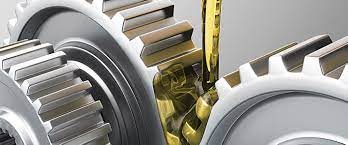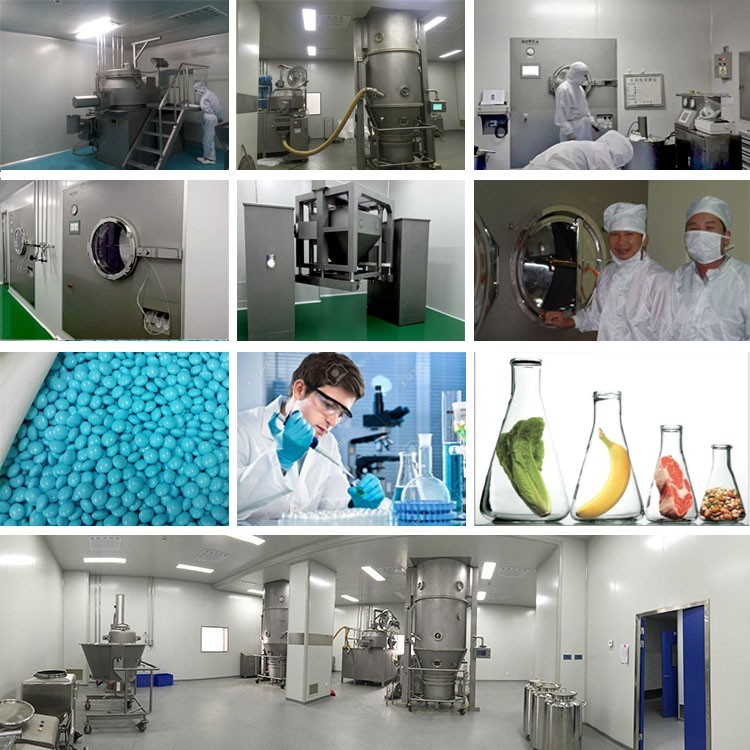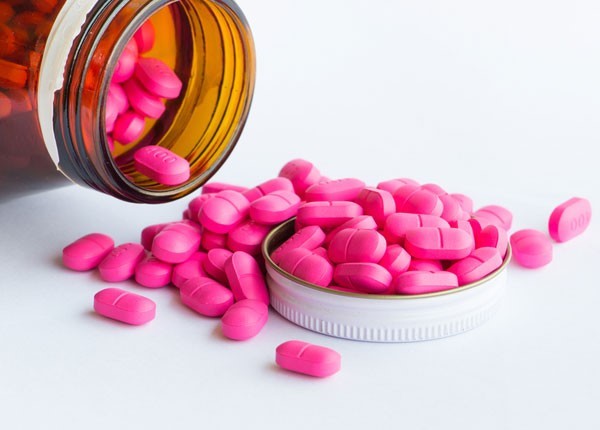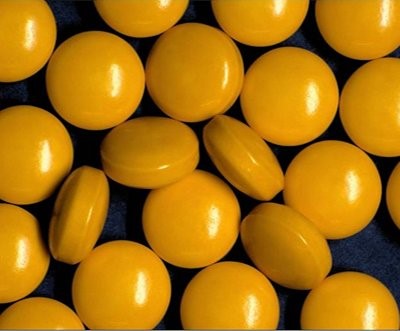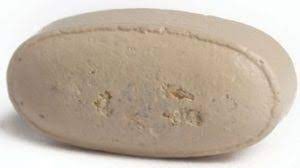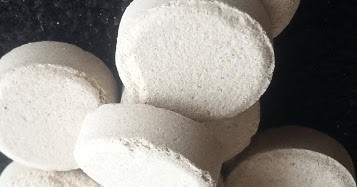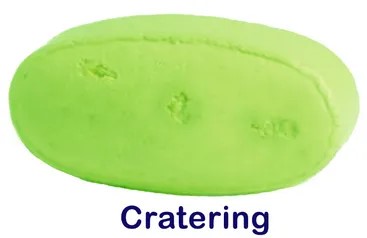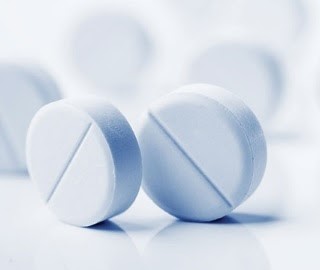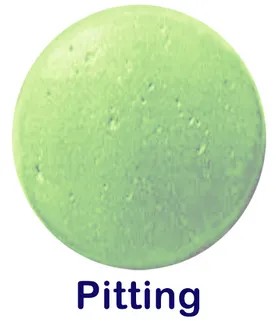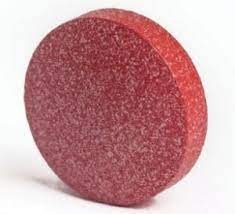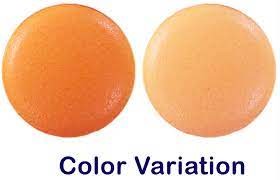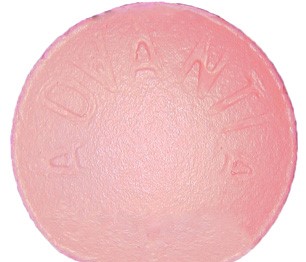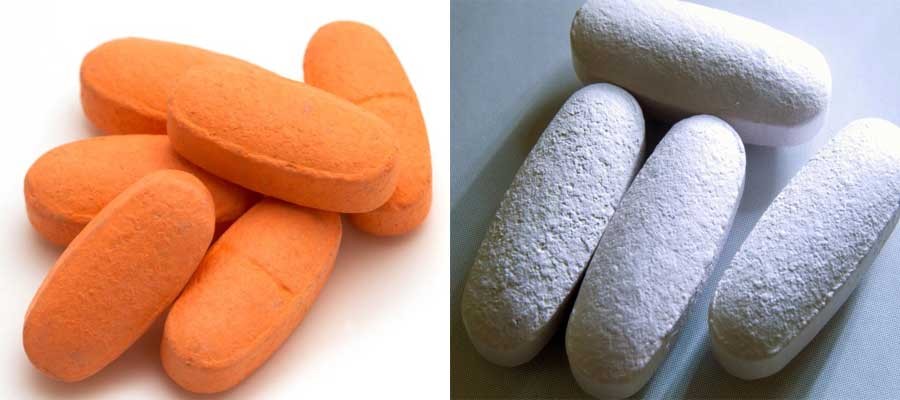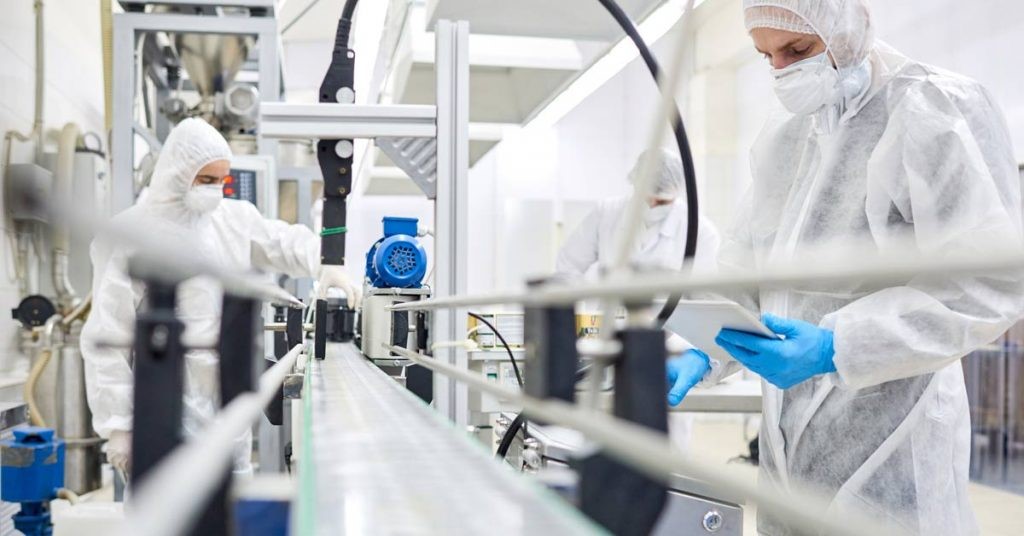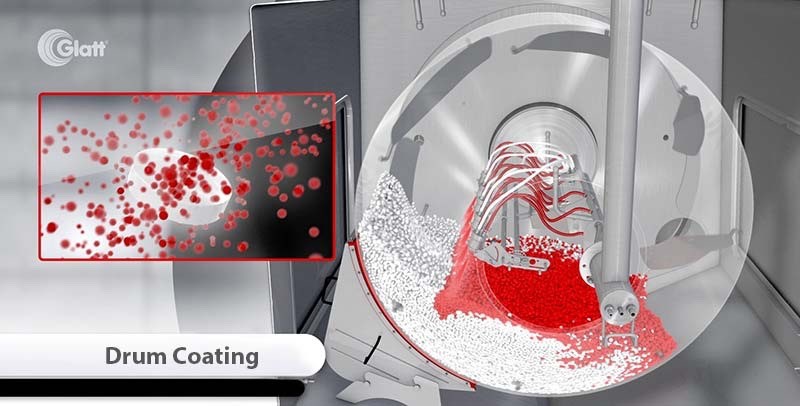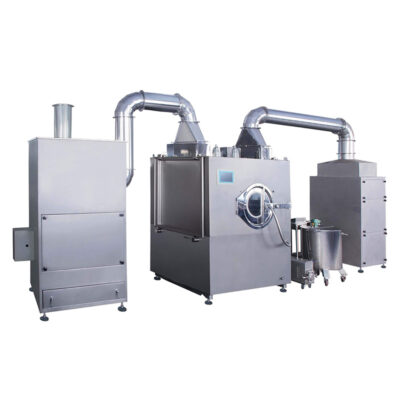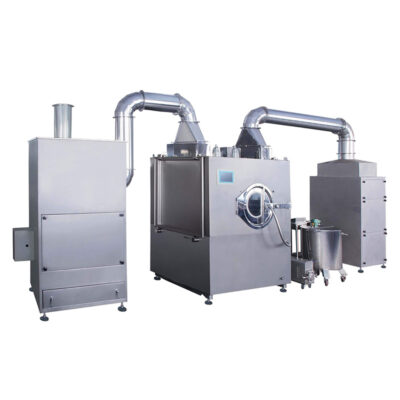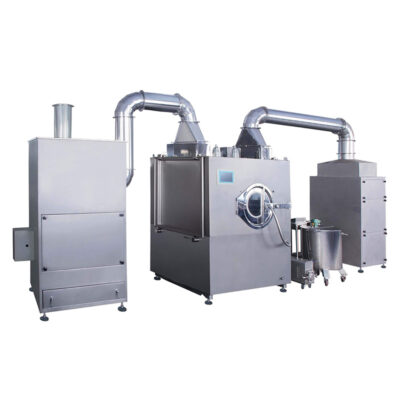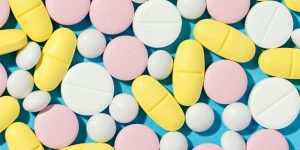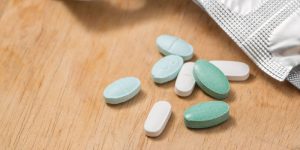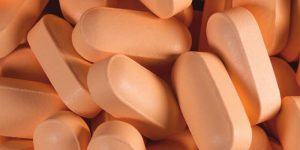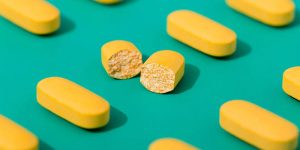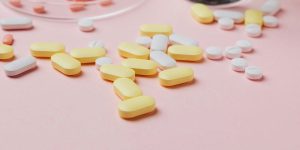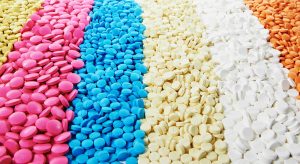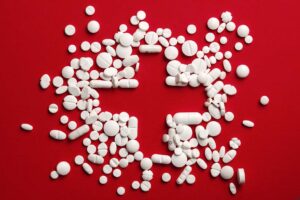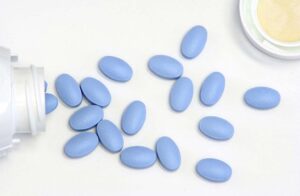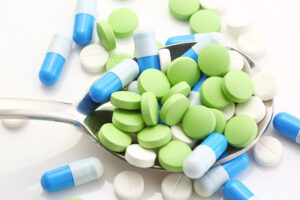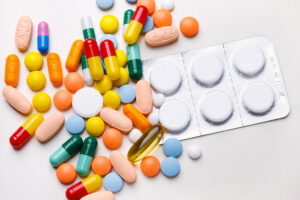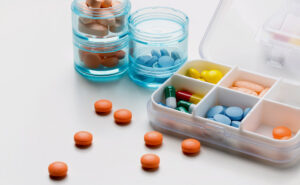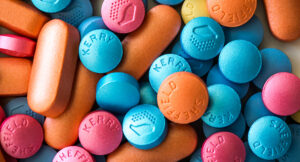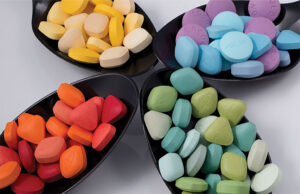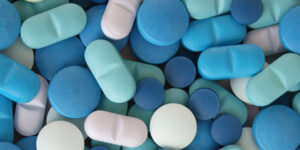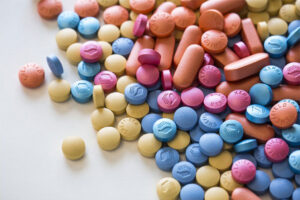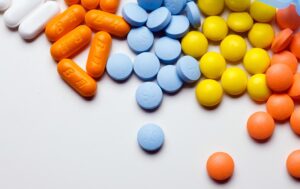Coating Pan:The Ultimate Buying Guide in 2025
The pharmaceutical, foodstuff, nutraceutical, and chemical industries are increasingly relying on standardized equipment to save their cost and obtain high productivity.
Thanks to modern-day to-day innovation and designs that are perfectly adapted by equipment manufacturers according to user requirements.
A coating pan is a widely used equipment for masking unwanted odor, taste, improving appearance to manufactured products. This is what exactly a manufacturer looks for!
The prime objective of this blog is to provide you comprehensive information about coating pans that can help you to skyrocket your business.
So, let's get into it!
1.What is a coating pan?
Coating pan
A coating pan is a machine that coats the external surface of the oral dosage form with coating ingredients.A coating pan is a well-regulated machine that supplies coating ingredients in a safe concentration to coat the tablets. Coating pan is available in different ranges, their selection depends upon the coating pan capacity you require.
The prime objective of coating the products is to make them more stable against oxidative degeneration;
- by environmental factors,
- mask the undesirable taste of medicines,
- enhance the appearance and flavor.
Coating pan product
The coating pan utilizes coating ingredients that are applied onto the tablet bed which moves continuously during the application of the solution. The concurrent airflow helps in the evaporation of sprayed solution rapidly and helps in even coating of ingredients. The rotation of the bed is based on a pre-selected rotating setting.
2.What is the coating pan working principle?
The working principle of a coating pan is rather simple: coating material is applied to a moving bed of tablets, and the solvent is quickly removed using a hot air current.
Coating Pan Working Principle- A Brief Overview
The main elements of the working principle are:
- To coat the tablets, they are placed in a closed drum that rotates constantly in an orbital pattern under the effect of a streamlined plate.
- The coating medium sprays should be occurred in a reasonable manner during the orbital motion of the tablets to avoid excess coating on tablets.
- Angled baffles are also inserted in the drum, as well as an airflow system that helps to mix the tablets.
- The baffles elevate and turn the tablets from the sides of the drum into the middle, exposing all sides of the tablets to the sprayed coating.
Coating Pan
- Hot air is injected from the 50% perforated tablet bed during the spraying process, causing the coating medium to dry quickly.
- The hot air is regulated in terms of temperature and volume that comes from the inlet fan. The air regulation allows the drum pressure to be maintained in proportion to the outside room, resulting in a completely isolated process environment.
- The air is additionally regulated, allowing for controlled drying and tablet extraction speeds. It also enables uniformly distributed media on the tablets, resulting in a smooth and uniform compact surface.
3.What are the components of the coating pan?
The basic components of the coating pan are as followed:
1. Coating Pan
A coating pan is the main component which is tilted at a 40-degree angle. A revolving coating pan is supplied with a diffuser that enables the distribution of hot air uniformly over the entire tablet's surface.
2.Air Heating Unit
A heater unit supplies the filtered air into the coating pan through an air duct system. A heating unit is provided with a temperature regulator which is required for drying of coating tablets.
3.Exhaust Blower Unit
An exhaust blower unit of the coating pan contains a wet scrubber, blower, and a duct. The purpose of this unit is to suck the hot air and unwanted dust particles present in the coating pan.
A wet scrubber filters the unwanted particles and air hot before entering into the atmosphere.
A Simplified Illustration of Coating Pan
4.Solution Tank
A solution tank is integrated with a coating pan. The purpose of the solution tank is to prepare and supply coating ingredients for the procedure.
A solution tank is composed of a stirring unit that consistently stir the solution to homogenize it.
Solution tank of coating pan
5.Peristaltic Pump
The purpose of a peristaltic pump is to transfer the coating solution from the solution tank to the spray gun. A peristaltic pump constantly offers pressure to the coating pan thereby reduced the need for return pipes. A peristaltic pump supports the stabilization of the atomization of the solution during the spraying.
Coating Pan with Peristaltic Pump
6.Spray System
The spraying system is composed of a nozzle, pump, and solution tank. A spray gun is connected with inlets for a solution and air connection. This spray gun is an adjustable unit mounted on the stand.
The function of the spray gun is to atomize the coating solution into the finest particles and spray the solution over a rotating tablet bed inside the coating pan.
Spray Gun- Coating Pan
7.Gear Box
A gearbox that is integrated just behind the coating pan is used for rotating the coating pan.
A schematic diagram of coating pan 1) air compressor, 2) air regulator, 3) pressure tank 4) automatic spray gun 5) pan 6) motor 7) inclinometer 8) air heater 9) fan
8.Electric Motor
The electric motor of the coating pan enables various tasks of the coating process such as blowing air, mixing, rotation of the coating pan, and generating negative pressure.
The electric motor unit is included in the coating pan, hot air ducts, peristaltic pump, and exhaust unit.
9.Control Panel
A control panel is an essential part of the coating pan operated by trained personnel to input various required parameters for the coating process.
In a conventional coating pan, you need to operate it manually while automatic coating pans are now integrated with touch screen operating panels which have a more user-friendly interface for significant operation.
4.How many coating pan designs do you have?
Many types or designs for tablet coating are available in the market.
In general, they are the modified version of the following three main types.
Schematic diagram-Coating Pan
1.Standard Coating Pan
Composition:
This type of coating pan contains a circular metal pan, sloped over the benchtop and can be rotated with electric energy. The diameter of this pan is in the range of 5- 200cm or 6-8 inches.
How does it work?
Briefly, the whole batch of tablets is introduced into the pan for coating which is set on rotation resulting tumbling of tablets within the pan.
During rotation of tablet bed, the coating solution is introduced by fine spraying which causes a more uniform spread of coating solution compared to simply adding liquid into the pan.
The next step is to dry the coated tablet bed which can be efficiently achieved in one of the following ways.
- A perforated metal sword is used for distributing drying air and it is submerged in the tablet's bed.
- baffled pan and diffuser are also used for drying purposes. It evenly distributes drying air over the surface of tablets.
- The tube system is another modified version for spraying drying air. Here, the tube is submerged in the tablet bed and uses a spray nozzle for distributing air.
2.Perforated Coating Pan
Composition:
This type is a completely enclosed sealed system. It consists of a drum that is fully/partially perforated and rotates horizontally.
Perforated Coating Pan
Following types are examples of perforated pan.
- Accela-Cota/Hi-coater Systems: In this system, drying air is passed all over the tablet bed and it is released via perforations that are the feature of a drum.
- Driacoater: Similarly, in this equipment, there are channels for in and out of drying air in the drum’s wall. Drying air is introduced through a hollow space in the periphery of the drum, passes over the entire tablet bed, and is subsequently, released from the backside of the pan.
Driacoater Coating Pan- Photo Credit- Exapro
- Glatt coater: The unique feature of this type is that it is completely perforated which gives an advantage of high process efficiency in minimal time. Air flows horizontally which reduces the turbulence in the nozzle resulting in the highly precise coating. The geometry of the drum and the Glatt baffles mix further contribute to the perfect coating and protection of the product from any damage/loss. The drum is joined in GC smart housing, conveniently accessible, completely welded, and mounted.
Glatt coater- Photo Credit- Machinio
3.Fluidized Bed or Air Suspension Coater
In this type of chamber, there is a vertical cylinder in which air flows in an upward direction from the central point of the bottom to fluidizes the pellets. The tablets flow upward along with the air and drop out or down through the chamber wall. The Airstream is then re-entered for further process. For adding the coating solution, there are spray nozzles located at the top and bottom of the chamber.
5.What is the working procedure of tablet coating using a coating pan?
The final step of tablet manufacturing in pharmaceuticals is the coating. This procedure gives a fine and pleasant appearance to the tablet therefore, one can easily distinguish between coated and uncoated tablets.
Coating Pan
There are two main types of tablet coating.
- polymer film coating
- sugar coating
The oldest way of coating is sugar coating. Following are the basic steps of this method.
1.Sealing
The tablet core is sealed by a seal coat which protects it from water penetration in the subsequent steps. Seal coat gives strength plus stability to the tablet core.
Chemicals used as a sealant include hydroxypropyl methylcellulose (HPMC), polyvinyl acetate phthalate (PVAP), cellulose acetate phthalate (CAP), hydroxypropyl cellulose, Zein (a corn protein derivative), and Shellac.
Tablet Coating
2.Applying a Sub Coat
The next step is sub-coating, in which the uneven edges of tablets get become finely rounded and also the weight of the tablet is increased. Methods by which sub-coating is performed include the suspension process and lamination process.
- Lamination process- Sub-coat mixture is composed of binder (gelatin or acacia) and sucrose solution. This mixture is added over the surface of tablets followed by the addition of powder chemicals such as calcium sulfate, titanium dioxide, calcium carbonate, and talc.
3.Smoothing
Smoothing is an essential step to make the rough surface of the tablet smooth after sub coating and to increase the bulk weight of the tablet to the desired size.
The smoothing syrup is mainly composed of sugar (60%–70%), opacifier, starch, pigments, gelatin, and acacia. It is not a one-time procedure rather it repeats several times until tablets become appropriate for the next step.
Tablet Coating
4.Applying A Finishing Coat
Coloring is the important step in tablet coating because it gives a pleasant, appealing form to the tablet, stability, and contributes to improving patient compliance. As mentioned above, the sugar solution mainly consists of sugar and to less extent, it also contains coloring pigments. Water-soluble dyes were also traditionally used as a coloring agent.
Tablet Coating
5.Polishing
Polishing is performed to enhance the dull appearance of the tablet. It gives a shiny and elegant appearance to the tablet. Generally, the process is carried out in a polishing pan using different types of wax including candelilla wax, carnauba wax, and beeswax.
Tablet Coating
6.What are the critical operating parameters of the coating pan?
There is a qualitative relationship between tablet coating and a coating pan. Tablet coating is not just an overly complicated procedure, but it also requires an appropriate operational step that ensures the finished product is coated evenly without any defect.
Discussed below are the primary parameters required when using a coating pan.
1.Size of the Batch
Yes! batch size is the most fundamental parameter when using a coating pan. Because the speed of the coating pan is determined according to batch size, acceleration of spray, rate of airflow, and bed temperature.
The prime target is to achieve a uniform cascade motion with the movement of tablets in the spray zone.
Coating Pan
2.Humidity Level
The humidity level inside the coating chamber also affects the coating process due to variation in the gun to bed distance.
This ultimately results in roughness and friction between moving beds hence tablets become wetter, stickier, and twining may occur inside the coating pan.
Tablet Twinning
3.Inlet Air Temperature
A processed air is introduced into inlet air from outside. For this purpose, a processing unit with HEPA filters is installed outside the coating pan that allows process air which is heated by a heating rod or steaming system.
The processing unit is composed of
- Pre-filter
- Bag filter
The temperature of inlet air is significant as it evaporates the solvent and allows tablets to dry efficiently. Inlet air temperature is a well-balanced procedure that allows tablets to dry in an optimum way neither too dry nor too wet.
If too much heat is provided it will cause:
- Evaporates solvent from tablet surface results in an orange peeling effect
- Logo filling
- Rough surface
- Variation in tablet weight
If too low heat is provided it will cause:
- Twinning of tablets
- Picking
- Sticking
Therefore, the inlet air temperature of the coating pan should critically be monitored.
4.Outlet Air Temperature
Outlet air temperature is a very important parameter for the tablet coating procedure. The temperature of outlet air is 10-20 degrees centigrade lesser than inlet temperature to keep the heat exchange mechanism balanced. The expelled air should be filtered before releasing the environment.
5.Outlet Butterfly Valve
Coating Pan
The butterfly valve of the coating pan regulates the rate of air expelled from the coating pan outside the atmosphere.
- If the opening of the valve is more, the flow of air outside and inside suction of the coating pan is increased, which means high negative pressure develops inside the coating pan that removes the dust and vapors from the coating pan at a high rate.
Important Factors for Suitable Tablet Coating- Coating Pan
Similarly,
- If the opening of the butterfly valve is minimum, the removal of air into the environment would be lesser, which will reduce the development of negative pressure, due to less negative pressure removal of dust and vapor would be reduced.
The entire cycle will promote the humidity level that will ultimately affect the coating process.
Butterfly Valve- Coating Pan
Hence, the opening and closing of the butterfly valve should critically assess to obtain optimize outcomes.
6.Tablet Bed Temperature
Tablet bed temperature is the temperature of rotating tablets. This is an important parameter of the coating pan because this temperature informs the operator to regulate the inlet air temperature.
Coating Pan
This temperature is measure by an installed sensor probe in a coating pan that display on HMI.
The temperature is also depending upon the type of solvent utilized such as in the aqueous coating temperature of the tablet should be 38-44 ⁰C, for Hydro-alcoholic temperature should be reduced up to 35-37 ⁰C and for organic solvent temperature should be kept 32-34⁰C.
Importance of Optimized Tablet Bed Temperature- Coating Pan
If the temperature of the tablet bed is dropped then inlet air temperature tends to optimize it within range by increasing the temperature and vice versa.
7.Pan Speed
Pan speed of coating pan that allows continues coating process also has great impact on the coating process.
- If the speed of the pan is more, it may cause attrition and breaks the edges of the tablet during rotation and makes it rough.
- The low speed of the coating pan may hinder the movement of tablets and affect the action of sprinkling spray rate.
8.Spray Rate
It is the rate at which coating solution is sprayed over coating tablets. This is basically controlled by a peristaltic pump integrated with a coating pan.
- Spray can is regulated by modulating the RPM of the peristaltic pump.
- An optimized spray rate is preferred to avoid tablet coating defects. Because, if the spray rate is high, then the improper coating is achieved due to an increase in inlet air temperature and vice versa.
Hence, spray rate, inlet air temperature, as well as tablet bed temperature are closely interconnected with each other.
A simplified example of coating pan
9.Atomizing Air Pressure
The droplet size of the coating solution is determined by atomized air pressure.
- If atomize air pressure is increased fine droplets are produced that get dried before reaching the tablet surface.
- Similarly, low atomized air pressure would result in over-wetting.
So, atomizing air pressure must have remained optimum during the process of coating.
Atomizing Air Pressure- Coating Parameter
10.Gun to Gun Distance
Spray guns that deliver coating material in fine mist form over the surface of tablets.
Gun to gun distance is the area between coating guns and coating pan. They are installed on a rod that is integrated with a coating pan.
Gun to Gun Distance- Basics of Operating Coating Pan
- In case the gun-to-gun distance is short, it results in overlapping of spray shower and results in over-wetting.
- If gun to gun distance is more then it won’t allow proper showering of coating spray over tablets. Hence the area of tablets would dry and fragile.
11.Spray Gun to Tablet Bed Distance
Tablet bed distance and spray gun should be optimized as it also plays a vital role in the coating process.
Spray Gun to Tablet Bed Distance
It is recommended to keep distance from the surface of the tablet to the gun as shown in the figure (for aqueous solution: 25cm while for organic solvent: 15-20cm).
The distance between the tablet surface and top to bottom of the coating pan is recommended as 1/3 to ½.
If the distance is less than 1/3 it could result in evaporation and dryness of coating material. Whereas over-wetting, tackiness, or clustering may result if the distance is greater than ½.
Spray Gun to Tablet Bed Distance
7.Do you know what conventional coating pan is and auto- coater?
1.Conventional Coating Pan
A conventional coating pan is traditional pharmaceutical processing equipment for coating the oral dosage formulations which are still effective.
Over the year advanced expertise in the construction of coating pan systems has been implemented to meet customer demand.
A conventional coating pan is a very simple and easy-to-use equipment suitable for small or large-scale tablet coating.
Coating Pan
2.Auto Coater
A high-efficiency automatic coating pan or auto-coater is extensively used in the pharmaceutical and food sector for coating tablets, pills, or food products. An automatic coating pan is designed with energy and cost-saving features that operate small to large size batches hygienically. A PLC system controls all the coating parameters.
Auto Coater
8.What are the industrial uses of coating pan?
The coating pan uses are as followed:
Pharmaceutical Industry
The applications of coating pan in pharmaceutical are remarkable. Coating pan plays a significant role in masking undesirable taste, enhancing appearance, protecting, boosting the pharmacological and physiological activity of therapeutic drugs. A coating pan is used on a large-scale manufacturing unit of the pharmaceutical industry to coat tablets either in the form of sugar-coating, enteric coating, or film coating, etc.
That’s why you will find day-by-day advancements in the construction and design of coating pan machines in order to meet high manufacturing demands.
Role Of Coating Pan in Pharmaceutical Industry
Nutraceutical Industry
Achieving the desirable appearance with a high-quality coating, while seeking lower potential complications, is the major challenging factor when it comes to nutraceutical tablets.
The nutraceutical industry basically focused on balanced between optimized ingredients and role manufacturing process. Excellent features of the coating pan absolutely offer suitable results for health-conscious coating choices that certainly provide protection against sensitive nutraceutical tablet cores.
Role Of Coating Pan in Nutraceutical Industry
Food Industry
No one can deny the role of coating pan in the manufacturing of food or beverages.
Definitely, every food-making industry strives to make their product up to a high level to please and satisfy their consumers.
Many processed foods manufacturing units consider coating pan as an essential tool to bring originality and attractiveness to their manufactured goods.
Role of Coating Pan in Food Industry
Veterinary Industry
Most often veterinary industries pay special attention to handling veterinary products in order to distinguish and separate them from the category of the usual oral dosage form. It will not only provide safety as well a user can easily identify the property of tablets and dosage.
Coating pan applications in the veterinary manufacturing area are common and diverse to meet the clinical and improved physical impact.
Veterinary Industry- Applications of Coating pan
Research and Development Laboratories
Manufacturing a small batch is really important for any tablet. Every drug has to R&D phase and coating is a very crucial time as you develop the process that works significantly. Coating pans for R&D tablet coating have been designed to provide simple function and convenience for small batch production to get good quality throughput.
Small coating pan for Laboratory Purpose
9.How does the coating pan machine benefit the manufacturing unit?
The benefits of coating pan machine are as followed:
Improves Quality of Products
A constant revolving of coating pan offers suitable application of coating solution that enhance the elegance and glossy looks to tablets.
Safe and Improved Throughput
The coating pan is constructed with a fully finished stainless steel that offers high-quality product treatment with great output. Coating pan meets all required US and international quality standards assigned for the pharmaceutical and healthcare sector.
Cleaner and Safer Workplace
Coating pan machine offers operator, environmental, and product safety with lesser risk of explosion when dealing with organic solvents.
The coating pan is well-equipped with an advanced air duct that is designed to suck unwanted particles. A wet scrubber, air filtered system allows the trapping of polluted particles and releases cleaned air into the atmosphere. The entire components offer 100% user, product, and eco-system safety.
PLC Touch Screen
The automatic coating pan has an integrated PLC display that offers small to large batch control tasks and processes typically by pressing the menu and load the desirable protocol.
Easy to Clean
The surface of the coating pan is made up of stainless steel where the application of coating solution can be easily cleaned after the process by simply water with compressed air or using a nylon brush. This method is applicable for both coating pan and spray system.
10.How to install a coating pan?
It is recommended to install a coating pan by experienced and trained personnel who must be well equipped with safety kits such as goggles, safety shoes, and helmets to avoid mishaps.
- Unload the coating pan from the container and place it at the installation site with the help of a fork-lifter.
- A coating pan is provided in a wooden cart therefore, it is recommended to use a crowbar to open the box.
- Visually inspect the machine before installing it.
- In case of damage immediately report the supplier.
- It is suggested to install the machine in a clean dried and well-ventilated place.
- There should be a suitable power supply with either single or three-phase motor variables with power supply ranges from 110V to 440V.
- Before starting the machine assess the reducer of the coating pan that must be fully packed with lubrication oil.
- Assess that all fasteners must be tightened as well as a cleaned coating pan.
- Monitor the delta rubber belt transmission to the direction specified to the plate on the belt cover.
- Machine connection wiring must be grounded.
- The recommended electrical resistance must be ≤4Ω.
11.How to operate a coating pan?
- To operate a coating pan press ‘ON’ the main and HMI unit of the coating pan.
- Load the coating material and switch ‘ON’ the electric supply in order to mix the coating material.
- Loading tablets into the coating pan is a manual procedure.
- Close the front mouth of the coating pan properly.
- Load the data on HMI, feed the time, RPM, temperature- SAVE the protocol in the menu.
- You may check protocol and START the process by pressing the key.
- In case dosing diminish for more than one minute, the machine itself will be stopped.
- At the end of the procedure, drain the water for cleaning the silicon tube and spray gun.
Operating Coating Pan
12.How to clean and maintain the coating pan?
To keep the coating pan in excellent condition, you must look for cleaning and maintenance criteria of equipment routinely.
1. Batch to Batch Cleaning
- Before cleaning ensure the coating pan and its blower is switched off.
- The drain valve must be closed before initiating the cleaning procedure.
- Swipe the adhered content from the internal and external surface of the coating pan, gun housing, and unloading devices with help of a dry lint-free cloth.
- Clean the tank with help of a dry cloth.
- Clear the silicone tubes with help of purified water and 2% non-ionic solution (detergents or cleaning agents).
- Use 15% sodium carbonate solution if enteric coating products were processed.
- Clear the solid deposits in the spray gun by using compressed air.
- Dry the silicon tube and spray gun with compressed air.
- Check the integrity of the O ring and replace it with a new one in case of any defect.
2.Product Change Over Cleaning
- Cover the HMI and pump housing using polybag.
- Pour clean/potable water into the coating pan and run a peristaltic pump using 50RPM over the running pan.
- Scrub the internal side of the coating pan using a nylon scrubber with a long handle and clean the adhered material.
- Use approximately 10 liters of 2% non-ionic solution and spray the tank with the help of a peristaltic pump.
- Open the door of the coating pan, exhaust, and inlet duct and clean the coating pan by further adding potable water for twenty minutes.
3.Maintenance
Daily
- Clean the coating pan routinely before and after use.
- Clean the spray gun on a daily basis. disassemble the head of the spray to clean the remaining residues of the coating material.
- Always monitor the temperature regulation of the coating pan.
Monthly
- Clean the coating pan if it is not operated for some time.
- Lubricate the copper surface of the coating pan in order to protect the pan from oxidation.
- You must replace the lubricating oil from the reducer case and rolling bearings every six months.
- Must confirm if worm gear of reducer case meets with a defined standard of lubrication.
- Replace oil-proof gasket ring every six months.
- Reapply grease over roller bearings on a regular basis.
13.How to calculate coating pan capacity?
To achieve a good tablet coating, the number of tablets to be coat in coating pan is extremely important.
Randomly used quantity of tablet may cause insignificant problems.
Therefore, before coating it is mandatory to calculate the coating pan capacity to treat the tablets.
It is determined by simply estimating the brim volume of the coating pan.Do you know what is brim volume?
It is the total volume of water during pan is filled at its current state.
Every coating pan has different brim volume due to different.
The brim volume is always mentioned when you buy a coating pan.Otherwise we will tell you the simple way to determine the brim volume.
You need to determine the number of tablets to fill the pan up to brim.
Hence it is calculated as:
capacity of coating pan in KGs = Brim volume in liter ⅹ Bulk density of tablet in mg/ml
While for minimum capacity you need to estimate as 60% of maximum capacity of above equation.
14.What are recommended precautionary measures you must follow when operating a coating pan?
Whether you are operating a conventional coating pan or automatic coating pan for tablet coating, user and environmental safety should never be compromised.
For this purpose, a novelty in the design and construction of the coating pan is always deemed to improve.
There are following precautionary guidelines that you should follow prior to using a coating pan machine.
- Personal Protective Equipment/ PPEs
It is the responsibility of every operator to use PPEs every time when operating a coating pan, a pair of safety goggles for protecting eyes, a face mask to protect the respiratory system, proper protective clothing to protect personnel should never be ignored. Always wear acid and alkali-proof gloves.
- Solvent Free Coating
The use of solvent, as well as heat exposure, is hazardous to operator and environment, such as toxicity, flammability, and unwanted effects of residual solvent. Therefore, the material inside the coating pan must be solvent-free to minimize the risk of undesirable risks. Although nowadays practice of solvent coating material has been limited and replaced with solvent-free in the pharmaceutical unit.
- Ventilated Area
Ducting and hooding should be installed within the overall unit coating pan to ensure personnel safety. So, working place would be balanced with good air conditioning and a ventilation unit to avoid suffocation in the workplace.
- Handling Coating Pan and Coating Solution
Do not handle the equipment and coating solution without adequate guidance training on safety precautions.
15.What is a perforated and non-perforated coating pan?
The process of coating in pharmaceuticals is performed in coating pans. Traditionally, non-perforated pans were used to accomplish this process.
The establishment of the “clean air act (1980)” introduced amendments and demanded pharmaceuticals to maintain pollutant-free air, restricted exhaustion of volatile material. Therefore, pharmaceuticals started utilizing “Aqueous coating” which requires efficient drying that cannot be achieved with non-perforated pans because of air evacuation problems hence, perforated pans remain the appropriate choice.
- PERFORATED PANS
The principle operation requires a spray gun for applying the solution. There are baffles in the pan that rotates tablets, in parallel air (at an angle of 45°) gets into the pan and exhaust through perforations.
Drawback: It is hard to make sure that the perforations are perfectly cleaned from inside, hence it may increase chances of the product-to-product contamination.
- NON-PERFORATED PANS
Non-perforated pans have the limitation of not maintaining air cycle (air in and out) during coating; therefore, their use is decreased. However, some pharmaceuticals attempted to overcome this limitation and introduced a modified version named “double sword system” which works in a way that air enters from one sword and exhausts from the other. However, the difficulty that occurred with this is that the tablets adhere to the sword due to high inlet air.
16.What are the major coating techniques used for coating?
The entire procedure of coating involves the application of coating solution over the rotating bed of tablets in parallel with the exposure of heated air to evaporate the unwanted solvent.
The currently available types of coating are;
Sugar-coated tablets:
In this type, tablets are coated with a layer of sugar which may be colored or non-colored. It is water-soluble hence, instantly dissolves just after swallowing.
It protects processing tablets from environmental effects and improves tablet appearance, taste, and order. Overall, the sugar coating of tablets improves patient compliance.
Sugar Coated Tablets
Film-coated tablets:
These types of tablets are usually compressed tablets, and a thin layer of polymer is applied over them as a coating substance. Generally, these tablets are colored, less in weight, more durable, and attain quick bioavailability.
Film Coated Tablets
Enteric-coated tablets:
In this category, tablets are specially designed to disintegrate and release their drug content into the intestine. This type of coating is effective for drugs that get destroyed by the acidic pH of the stomach or may cause irritation to the stomach mucosa, hence by this coating the problematic drugs pass through the stomach unchanged and get dissolve in the intestine for producing a therapeutic effect.
17.What troubleshooting are associated with coating pans and how to solve them?
To overcome the problems associated with tablets coating, there are some solutions available below.
- Blistering
Definition
The state when the surface film of the tablet gets removed from its core is called the blistering phenomenon. It may occur due to insufficient binding/adhesion between raw ingredients of the tablet.
Blistering
Cause
Elevated temperature in the pan during coating is generally considered as the cause of blistering. This may happen during the spaying stage or in the final stage of coating.
Remedy
This problem can be reduced by optimizing temperature during the drying process. Mild drying during coating along with moderate temperatures at other remaining steps of coating could result in a better-finished foam of tablet.
- Chipping
Definition
Chipping is largely visible on the edges of the tablet. It happens when the surface film of the tablet becomes chipped and dented.
Chipping
Causes
Tablets can be deformed when there is an abrupt decrease in the speed of rotation during coating in the pan.
Remedy
The mechanical strength and speed of the coating pan can be optimized to overcome this problem.
- Cratering
Definition
Cratering is a kind of defect in film coating of tablet in which bowl-shaped depression or crater appears in the surface film of tablet resulting this phenomenon exposes the surface of the tablet.
Cratering
Causes:
This defect may occur due to two reasons.
1) The application of excessive coating solution hence, more polymer solution penetrates and absorb into the tablet surface particularly in the crown area, which ultimately results in distortion of the coating and tablet degeneration.
2) Proper time required for sealing the film is not provided.
Remedy
Optimization of the entire drying step in the coating process particularly the temperature may help to overcome this problem.
- Picking
Definition
Picking is considered as the loss of some part of tablet. It happens when the surface film of tablet stick to the pan which results in the detachment of some pieces of tablet core.
Picking
Causes
Picking may occur due to the use of excess coating solution which causes over wetting of tablets resulting in the surface film becomes tacky therefore, tablets stick to one another.
Remedy
This defect can be overcome by optimizing drying conditions of the coating process, for instance, elevating the air inlet temperature. Secondly, by decreasing the volume of the coating solution or by increasing the viscosity of the solution.
- Pitting
Definition
Pitting is also the kind of deformation of tablet core, however, apparently, there is no sign of distortion of the surface of film coating.
Pitting
Causes
It may occur due to elevated temperature that makes the core of the tablet excessively hot than the melting point of ingredients used in its composition.
Remedy
This problem can be troubleshot by optimizing drying conditions of the coating process considering the physicochemical properties of ingredients used in the formulation of tablet core and by adjusting the temperature of inlet air.
- Blushing
Definition
Blushing is also the defect of film coating in tablets. The surface film of the tablet appears cloudy, blur, foggy, or with tiny white spots.
Blushing
Causes
The appearance of white specks may occur due to polymer particles that may precipitate in the surface film or due to abnormally elevated coating temperature. Additionally, when polymer combined with other ingredients is used, it may cause polymer gelation that may result in blushing.
Remedy
Polymer precipitation can be avoided by decreasing the temperature during drying in a coating pan.
- Colors Variation
Definition
Tablets are manufactured on large scale in big batches. Good production is ensured by the uniformity in colors of the finished product.
Causes
There are various reasons for colors variation in tablets of the same batch.
- Insufficient mixing
- Variation in spraying pattern
- Improper coating
- Resettling of soluble dyes and plasticizers
- Improper use of additives during drying
Remedy:
The following solutions may overcome this problem.
- Optimum mixing at each step of tablet formulation.
- Optimization with a variety of additives and plasticizers.
- Mild drying conditions.
- Infilling
Definition
Infilling is a kind of defect that refers to the improper embossing and printing of symbols, or other related manufacturer information on the tablet.
Causes
Infilling may occur due to improper dispersion of polymer solution onto the tablets during the spraying step. Air may entrap in the polymer solution causing bubbles formation and ultimately the foam production resulting in the liquid drops may concentrate into the intagliations (unique words or symbols on the tablet).
Remedy:
This problem can be resolved by simply adding alcohol in the appropriate amount to the polymer solution which will improve dispersion or by using a spray nozzle that is able to atomize finely.
- Orange Peel (Roughness)
Definition
A well-formulated tablet should contain a smooth and glossy surface, however, when it is rough it appears like an “Orange Peel”.
Orange Peel Effects
Causes
The reason for roughness and uneven coating could be abnormally increased pressure and rate of spraying during coating.
Remedy
Moderate drying conditions and the use of less viscous polymer solution to decreased rate of spraying may overcome this coating defect.
18.Coating Pan Validation: A brief Overview
There are three major elements required for validation of a coating pan such as:
1.Installation Qualification or IQ
* IQ establishes assures that the coating pan is appropriately installed.
* Installation must be performed by supplier specified guidelines.
* All electric supplying functions in accordance with the mentioned guideline.
2. Operational Qualification or OQ
* Operational qualification establishes confidence that coating pan can operate within specified limits.
* The information needed for OQ assessment is
a) Coating pan calibration
b) Coating pan validation
c) Control panel
d) Coating pan speed
e) Coating pan temperature
f) Coating pan spraying unit.
3. Performance Qualification or PQ
Once the coating pan is machine is properly installed, then it must display the performance reliably under minimum and maximum working conditions. For instance:
* Coating pan working process
* Evaluate coating pan specifications (Assessment of RPM)
19.What are the future prospects and growth rate of coating pans applications?
Tablet remains the most commonly used solid oral formulation preferred for many purposes. For instance, easy to manufacture, accurate dose delivery, patient compliance, stability, and cost-effective.
So, why coating them is so important?
- From an aesthetic point of view, tablets without coating are somewhat rough-looking and give poor look that you won't prefer as a medicine.
- From the manufacturer’s point of view, the coating helps to protect the sensitive and active ingredient, mask the unpleasant taste, and most importantly it extends the shelf life and helps to distinguish the product.
That's why a coating pan is such a magical tool that keeps on increasing the manufacturer’s demand since its invention.
The growing demand for coating pans in pharmaceutical, food manufacturing, and related industries are driving a sharp growth of the coating pan market worldwide.
Globally, in 2020 the market demand for coating pan was estimated in millions of USD which is now expected to grow steadily from 2021 to 2027 into the latest trends.
This report is demonstrated the production revenue and growth of; ‘standard coating pan’ and perforated coating pan’.
While major end-users including food manufacturers and the pharmaceutical industry.
20.What are the important consideration factors that you must follow before buying a coating pan?
A critical analysis is always required before purchasing any machine.If you pay well-attention to something, it is more likely you get good quality!
A coating pan is a simple machine that requires deep knowledge about supplying sources and equipment.
In the market you will find unlimited vendors and a variety of coating pans, but do you think you can trust them?
In this section, you may consider the following important points before purchasing the machine.
1.Identify the coating pan capacity
Coating pans are available in different sizes, so you must know the exact requirement and a suitable coating pan capacity. This will not only save your time, but you will get the right machine on an optimized budget.
2.Acceleration
You must know the acquired acceleration for the coating process. For this, you need to properly scrutinize the feature of the selected machine.
3.Low-Noise, Elegant & Instant Throughput
This is a mandatory step before purchasing a coating pan. Always assess the nature of machinery, noise level, production output, and power consumption.
4.Competitive Vendors
This is a very important and crucial step before purchasing any equipment.
For coating pan, you must scrutinize for a good and competitive vendor who is willing to provide the best quality machine, transportation, installation, pre-sale, and post-sale services.
Conclusion
Coating pan meets a great position in the highly demandable manufacturing sector of pharmaceutical, food, and healthcare units. Coating pan offers high-quality coating applications in the form of sugar, film, and enteric coating in a cost economic, user, and eco-friendly way.
That’s why future market growth analysis of coating pan estimated with the highest growth rate in the pharmaceutical and food sector across the globe.
We hope this informational blog has explored all basic to advanced FAQs that will help you to choose the right and reliable coating pan.
Tablet Coating Machine Related Products
Tablet Coating Machine Related Posts
Tablet Coating Machine Related Videos
CONTACT US
Tell us your raw material and project budget to get quotations within 24 hours.
WhatsApp Us: +86 181 6426 8586
Want the best price & newest pharmaceutical machinery buying guide,tips and trends sent straightly to your box?Sign up for AIPAK’s monthly newsletter,we’re free for your consultation and Offer you the most suitable solutions!
The Buyer's Guide
- Capsule Filling Buyer's Guide
- Blister Packaging Buyer's Guide
- Tablet Counting Buyer's Guide
- Tube Filling Buyer's Guide
- Cartoning Buyer's Guide
- Gummy Making Buyer's Guide
- CO2 Extraction Buyer's Guide
- Empty Capsules Buyer's Guide
- Suppository Filling Buyer's Guide
- Tablet Coating Buyer's Guide
- Tablet Press Buyer's Guide
- Softgel Encapsulation Buyer's Guide
Most Popular
- 7 Importance Of Pharmaceutical Packaging In Different Applications You Must Know
- 6 Advantages You Must Know About Tablet Counting Machine
- 8 Advantages of Blister Packaging You Must Know
- 6 Critical Applications of Automatic Capsule Filling Machine
- 6 Stations You must Know to Improve the Filling Quality of Automatic Capsule Filling Machine
Tell us your material or budget,we'll reply you ASAP within 24 hours

